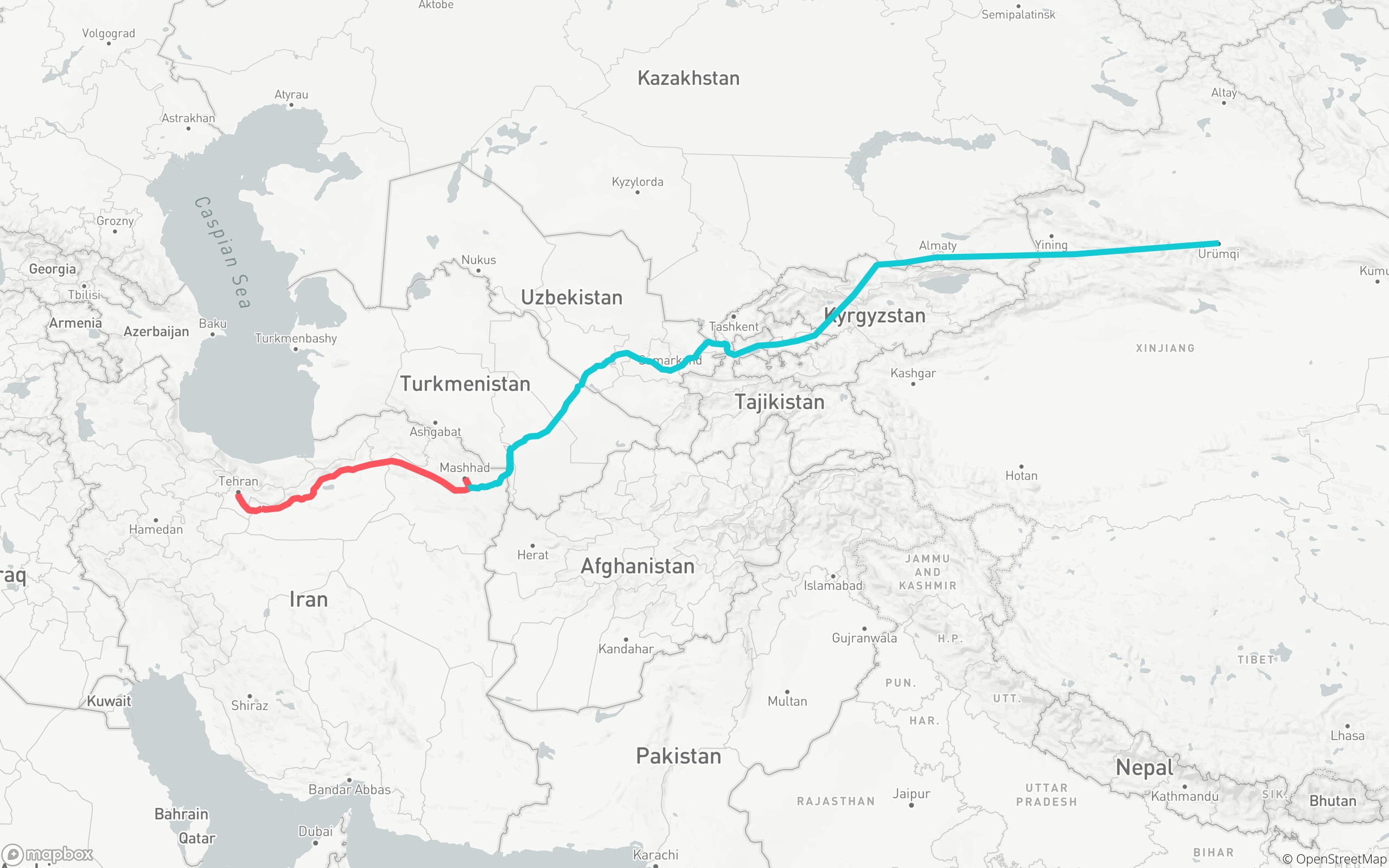The 926-km railroad linking the capital Tehran to the eastern religious tourism hub of Mashhad is part of China's New Silk Road initiative named "One Belt, One Road", which will cut short a long journey for Iranian passengers and cargo.
“All obstacles to the implementation of the project have been removed and, next week, operations for the electrification of Tehran-Mashhad line will begin,” deputy for Islamic Republic of Iran Railways, Maziar Yazdani, said.
“Previously we had signed a contract regarding the financing of the project–a $1.6 billion cheap loan,” he was quoted as saying by ILNA in a press conference.
China National Machinery Import and Export Corporation, known as CMC, is in charge of the railroad's electrification.
Asghar Fakhrieh-Kashan, deputy minister of roads and urban development, who oversees Iranian firms’ talks with international businesses, said last month Iran had finalized a €2.2 billion deal with the Chinese company in this regard.
Speaking to Financial Tribune on Wednesday, Fakhrieh-Kashan stressed that the final financial documents have not yet been signed, though he stressed that construction work will likely be started by either the Chinese company or its Iranian partner MAPNA Group.
He said the official financial deal is expected to be signed late June or early July.
Two-thirds of the contract are financed by the Chinese government and the rest is covered by Chinese insurer China Export and Credit Insurance Corporation Sinosure.
Iran resolved issues with government guarantees during the Iranian Economy Minister Ali Tayyebnia’s visit to China last month to represent Iran in the New Silk Road summit. He met with senior Chinese officials, including his counterpart Xiao Jie and Chairman of China Banking Regulatory Commission Guo Shuqing.
The route, which will be a strand of China’s New Silk Road, was proposed by He Huawu, the chief engineer of China Railway Corporation, in late 2015. The idea came just before the sanctions imposed on Iran over its nuclear program were lifted in January 2016, as part a deal Tehran clinched with world powers months earlier.
The proposed 3,200-kilometer New Silk Road rail link would begin in Urumqi, the capital of China's western Xinjiang Province and end in the Iranian capital. It connects Kazakhstan, Kyrgyzstan, Uzbekistan and Turkmenistan along the way, according to China’s state-owned paper China Daily.
From there, it would join Iran’s east-west network leading to Turkey and eastern Europe. It could also open a way to Europe via a developing rail route from southern Iranian ports to Azerbaijan and Europe.
The Belt and Road initiative, put forward in October 2013 by Chinese President Xi Jinping, includes several corridors through land and sea, including the New Silk Road rail route.
The route would become a tailwind for transport of goods and energy between Iran and China, which have set a long-term bilateral trade target of $600 billion/year.
For Iran, the electrification of Tehran-Mashhad line is part of its wider rail development plans. Its vision plan stipulates the electrification of all railroads by 2025. But the country is also aware of its capacity regarding global transport and logistics.
In a meeting with his Chinese counterpart in China last month, Tayyebnia said, “Iran’s position in Xi Jinping’s innovative plan to revive the New Silk Road is spectacular and ideal. Therefore, we intend to play an effective role in its implementation.”
He noted that Iran has been a part of the ancient Silk Road—a route contributing for centuries to trade and cultural exchange—stretching from Japan to the Mediterranean Sea and intends to have a more important part in the new plan.
"The Chinese company will start operations with a 138-km railroad connecting Mashhad to the city of Neyshabour," Yazdani said, adding that the traffic on the line will not be interrupted while construction proceeds.
The project is expected to be completed in four years.
The Tehran-Mashhad line is double-tracked and both tracks will be electrified as part of the deal with the Chinese company. This will raise the speed of the line from the current 160 kph to 200 kph, reducing the duration of a trip between the two cities significantly.
A subsidiary of China General Technology Group, CMC is an international engineering contractor in transportation infrastructure, industrial facilities and power plants.
In 2014, the company built the Ankara-Istanbul high-speed railroad, together with China Railway Construction Corporation Limited and Turkish companies.
MAPNA Holding signed a preliminary deal in October 2016 with Germany’s Siemens for the joint manufacture of 70 electric locomotives to be used on the Tehran-Mashhad route.



